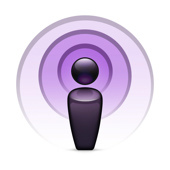
KFUPM PYP-English Technology 1






Technology 1 Unit 3 Design
3 Design
Design is at the heart of technology. This is why most technology courses include design in their syllabus. Look at any manufactured product, and you will see evidence of design. It may be beautiful, but appearance is only one aspect of design. It must also function well. The design process is a series of stages, or steps. It begins when someone notices that there is a need or problem in society which must be solved. It ends when a product is manufactured which meets or fulfils that need.
These are the stages of the design process.
• Identify the problem. For example: When a certain cooking pot is heated, the handle becomes too hot to touch. Sometimes the designer may have to invent a new product to solve the problem. At other times he or she may modify, or change, an existing design to improve it.
• Write the design brief (also called the design specification). This is a simple, clear statement of what is to be designed. For example: Design a handle that remains cool when the pot is heated.
• Do an investigation. The designer asks questions and finds out information to help design a good product:
Who will use this product? What will it do? How will it look? What materials are available? How much will they cost? Do they have the right properties (such as durability)? How will the product be made? How can it be made safe?
• Develop alternative solutions. Here, the designer thinks of different ideas, writing them all down without evaluating them at first. He or she will then produce sketches, or simple drawings, of the different designs.
• Choose the best solution. Here, the designer chooses the design which best solves the problem. He or she also considers cost, time, available materials, manufacturability (that is, whether it can be manufactured using available skills, tools, and machinery).
• Make a model or prototype (also called the realization stage, when a design is realized or made into a real object). A detailed drawing is made, probably using CAD software. Then a model or prototype (= first working version) is manufactured (or a computer simulation may be used).
•Test and evaluate. The prototype is physically tested and then evaluated to answer these questions: Does it work? Does it meet the design brief? Can it be improved in any way?
• Manufacture. If the final evaluation is positive, the company may decide to manufacture the product.
Design is at the heart of technology. This is why most technology courses include design in their syllabus. Look at any manufactured product, and you will see evidence of design. It may be beautiful, but appearance is only one aspect of design. It must also function well. The design process is a series of stages, or steps. It begins when someone notices that there is a need or problem in society which must be solved. It ends when a product is manufactured which meets or fulfils that need.
These are the stages of the design process.
• Identify the problem. For example: When a certain cooking pot is heated, the handle becomes too hot to touch. Sometimes the designer may have to invent a new product to solve the problem. At other times he or she may modify, or change, an existing design to improve it.
• Write the design brief (also called the design specification). This is a simple, clear statement of what is to be designed. For example: Design a handle that remains cool when the pot is heated.
• Do an investigation. The designer asks questions and finds out information to help design a good product:
Who will use this product? What will it do? How will it look? What materials are available? How much will they cost? Do they have the right properties (such as durability)? How will the product be made? How can it be made safe?
• Develop alternative solutions. Here, the designer thinks of different ideas, writing them all down without evaluating them at first. He or she will then produce sketches, or simple drawings, of the different designs.
• Choose the best solution. Here, the designer chooses the design which best solves the problem. He or she also considers cost, time, available materials, manufacturability (that is, whether it can be manufactured using available skills, tools, and machinery).
• Make a model or prototype (also called the realization stage, when a design is realized or made into a real object). A detailed drawing is made, probably using CAD software. Then a model or prototype (= first working version) is manufactured (or a computer simulation may be used).
•Test and evaluate. The prototype is physically tested and then evaluated to answer these questions: Does it work? Does it meet the design brief? Can it be improved in any way?
• Manufacture. If the final evaluation is positive, the company may decide to manufacture the product.
lundi 21 février 2011

podcasst from Oxford English for Careers, Technology 1 Teacher’s Resource Book Oxford University Press, 2007, by David Bonami; with additional material by Norman Glendinning





